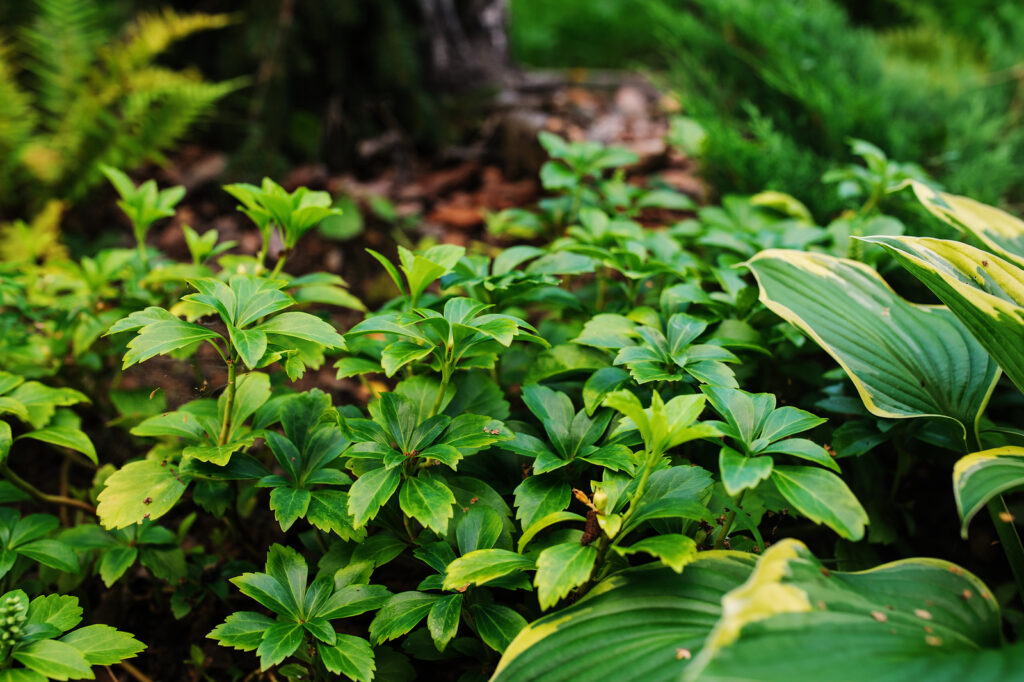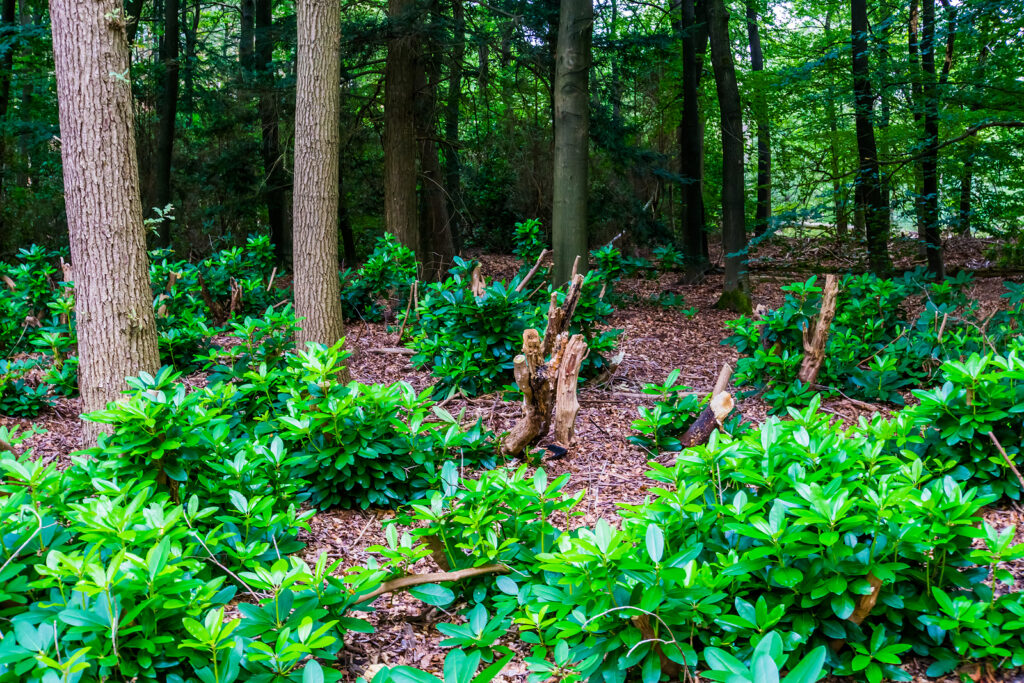Pachysandra–sometimes called spurge–is an often grown groundcover especially under the dappled shade of trees. There are two commonly grown species of Pachysandra; both are low-growing shrubby perennials. Leaves are elliptical and dark green; flowers are tiny and off-white.
Pachysandra spreads slowly via underground runners. Plants fill in nicely in less than a year when evenly spaced. Pachysandra is hardy to cold and easily competes with tree roots.
Pachysandra grows best in just moist, acidic soil. It is right at home in woodland and shaded gardens. Too much sun can cause leaves to yellow and slows growth.
Pachysandra is a genus of four species of evergreen or semi-evergreen perennials and subshrubs.

Get to know Pachysandra
- Plant type: Evergreen perennial.
- Growing zones and range: Zones 4 to 9
- Hardiness: Hardy to Zone 4
- Height and width: 6 to 12 inches (15-30cm) tall and 24 inches (61cm) wide.
- Foliage: Compact growth and clean, attractive foliage; leaves are up to 3 inches (7.6cm) long and elliptical or oval.
- Flowers: Not showy when viewed casually, but attractive at close range; flowers are individually tiny, off-white, and presented on short flower stalks, resembling stubby, worn-out, white, bottlebrushes.
- Bloom time: Varies.
- Uses: Ground cover and shady places, invaluable landscape plants.
- Garden companions: Liy-of-the-valley (Convallaria majalis)
- Common name: Spurge, Pachysandra
- Botanical name: Pachysandra
- Family name: Buxaceae
- Origin: Woodlands of China, Japan, and the Southereastern United States
Where to plant Pachysandra
- Plant Pachysandra in light to moderate shade.
- Pachysandra thrives in the filtered light of large, high-branched trees.
- Too much sun causes yellowing foliage and poor growth.
- At their northern limit, Pachysandra need to be sited out of strong wind.
- Plant Pachysandra in moist, well-drained, slightly acidic soil, well amended with organic material.

When to plant Pachysandra
- Set container-grown Pachysandra in the garden in spring or fall.
Planting and spacing Pachysandra
- Space Pachysandra 12 to 24 inches (30-61cm) apart.
How to water and feed Pachysandra
- Keep the soil evenly moist for best growth and color.
- Fertilizer Pachysandra with an all-purpose, slow-release organic fertilizer in spring.
How to care for Pachysandra
- Once established, Pachysandras are extremely tolerant of neglect, ad colonies will slowly spread to the limits of the suitable conditions.
Pachysandra pests and diseases
- Pachysandra can develop blight, leaf spot, dieback, and stem rot.
- Pachysandra can develop mites, nematodes, and scales.

Pachysandra propagation
- Divide Pachysandra in spring.
- Take Pachysandra softwood cuttings in early summer.
Pachysandra varieties to grow
- Pachysandra procumbens, Allegheny pachysandra: clump-forming species, is evergreen in the South but dies back in northern winters; deciduous in the colder part of its range; grows to 1 foot (.3m) tall; bears white fragrant flowers on brushy spikes rising directly from the ground in spring when new foliage appears; grayish-green leaves are 2-4 inches (5.1-10.2cm) long and 2-3 inches (5.1-7.6cm) wide, clustered near the top of the stem; leaves often mottled with gray or brownish markings. Zones 6 to 9.
- P. terminalis, evergreen Japanese spurge: the most common species: grows 8-10 inches (20.3-25.4cm) tall; space plants 8-24 inches (20.3-58.4cm) apart, depending on how quickly you need coverage; bears masses of small white flowers atop glossy, dark green foliage in early summer; leaves are 2-4 inches (5.1-10.2cm) long and .5-1.5 inches (1.3-3.8cm) wide; upper half of leaf has shallowly toothed edges; prized as a groundcover on shady banks, along woodland paths, and under trees where other plants won’t grow; it needs shade to thrive; spreads rapidly by underground stolons. Cultivars include ‘Green Carpet’ is a compact 6 inches (15.2cm) tall, and Variagata’ has green-and-white leaves and grows to 10 inches (25.4cm) tall. Zones 4 to 8.















